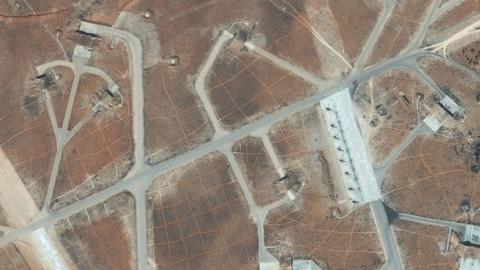By ordering the strike on Al Shayrat Airfield, from which Bashar al-Assad had launched a brutal chemical-weapons attack on his own people just days earlier, President Trump put the U.S. squarely back in the game of Middle East politics. But without further action, it will have been for naught; what must come next is a new regional strategy for the U.S. that is very different from the one adopted by President Obama — one that backs up diplomatic coalition-building with U.S. military strength.
In 1990–91, President George H. W. Bush used such a strategy to drive Saddam Hussein out of Kuwait during Operation Desert Storm. Today, the U.S. is once again perfectly positioned to bring together the region’s leading Sunni powers, and Israel, in an alliance against Iran and its Shia allies, who are the real geopolitical threat in Syria.
Who would be part of this alliance? Israel and Saudi Arabia, the region’s most powerful Sunni state, have been drawing closer for the past decade, united by their shared interest in counteracting Iranian regional aggression, as have the other majority-Sunni Gulf states. Egypt, Jordan, Turkey, and Oman could also become strong strategic partners in a U.S.-led coalition designed to thwart Iran’s ongoing efforts to trigger a regional Shia uprising from Syria and/or Yemen.
This new alliance would have two prongs, and two aims.
The first would be to permanently end Tehran’s designs on becoming a regional hegemon, especially in the eastern Mediterranean, where it is propping up the Assad regime in Syria and sponsoring terrorist groups such as Hamas and Hezbollah in Lebanon.
The second aim would be to crush ISIS wherever it holds territory, from Syria and the Sinai to Iraq, as well as to extirpate Sunni radicalism in all its forms. Here the U.S. would have to make it clear to the Saudis and other Gulf states that ISIS, like al-Qaeda, must be destroyed, both on the ground abroad and in the domestic madrassas and mosques that spread its vicious, radical message.
That, of course, leaves Russia. Fortunately, Assad’s renewed use of chemical weapons put Vladimir Putin at a disadvantage, since Russia almost certainly knew of the chemical strike, and may even have facilitated it. The Kremlin certainly lied when it assured the world that the regime’s stockpile of chemical weapons had been dealt with.
When Secretary of State Tillerson meets with Putin this week, he needs to take advantage of that weakness and stress to Moscow that its support for Assad is now a liability, not an asset. The Russians have already signaled that their support for Damascus is “not unconditional.” Their entire raison d’être for intervention in the Syrian conflict is combating “terrorism.” Now, they must acknowledge that Assad and his Iranian allies are no less “terrorists” than ISIS, and should be dealt with accordingly.
Far more is at stake here than removing a brutal dictator; preventing his Iranian patrons from becoming a dominant force in the eastern Mediterranean is just as important. The final goal of Trump’s strategy in the Middle East has to be convincing Putin that his support for and collaboration with Iran is a liability rather than an asset, and that siding with the emerging U.S.–Sunni–Israeli coalition is the best way for Russia to demonstrate a good-faith commitment to fighting terrorism and playing a constructive role in the region.
The region’s Sunni powers realize the potency of the Iranian threat, as does Israel. The Obama administration pretended the Iran problem would go way on its own if we sat on our hands. The Trump administration now has an opportunity to reverse course, enlisting a coalition of Sunni partners in the complicated task of isolating and limiting Iran’s power to revise the geopolitical order in the eastern Mediterranean and the Persian Gulf.
In closing, it should be stressed that none of these strategic shifts need involve placing more American troops on the ground in the Middle East. The team is already on the field; all that’s been missing is a quarterback. For the U.S. to fulfill that role, it merely needs a leader willing to reassert the influence that Obama wouldn’t — and that George W. Bush before him squandered in two endless regional wars.
Our natural allies in the region have been clamoring for help from Washington for years; Donald Trump now has the opportunity to provide it.














